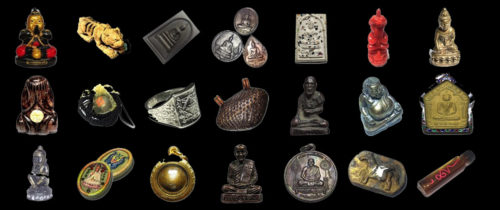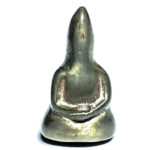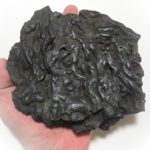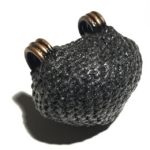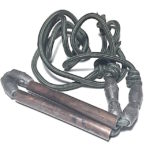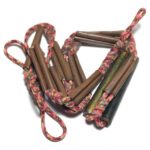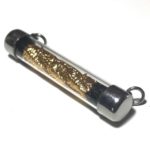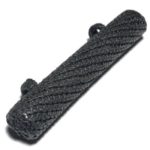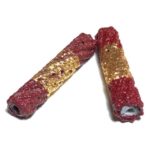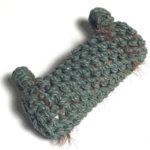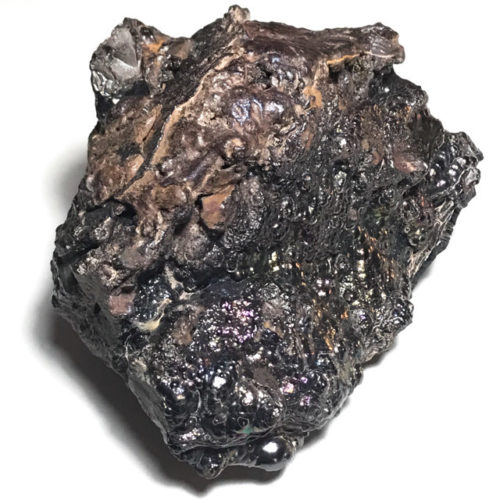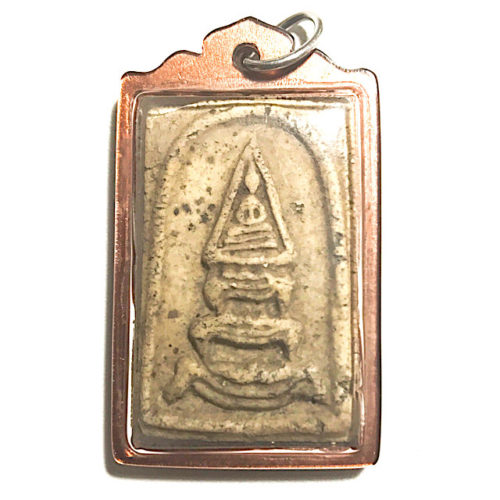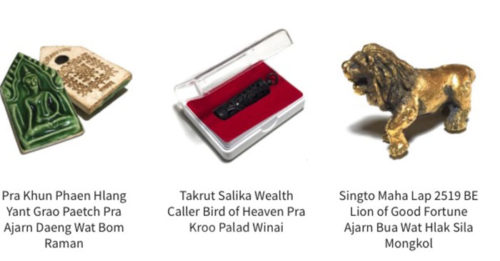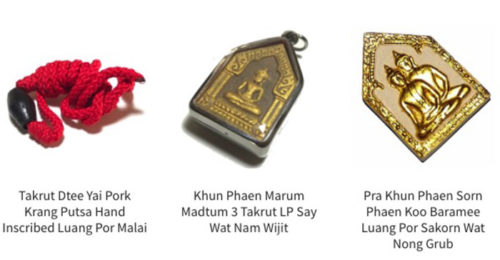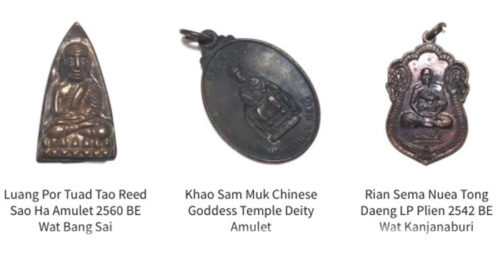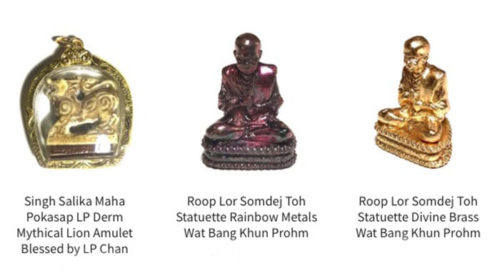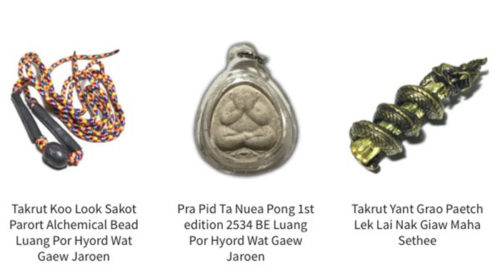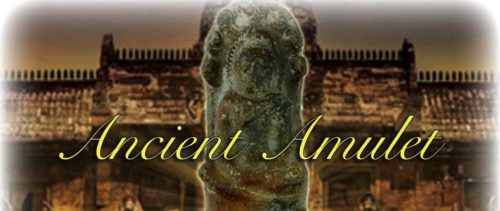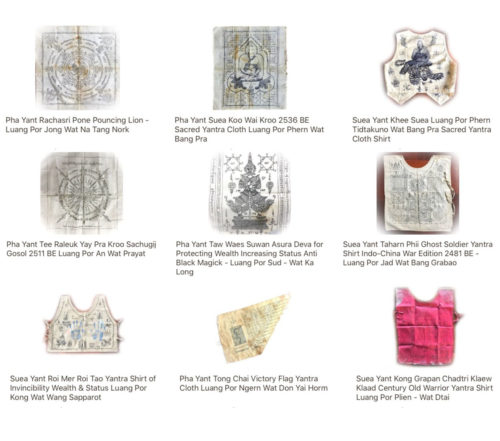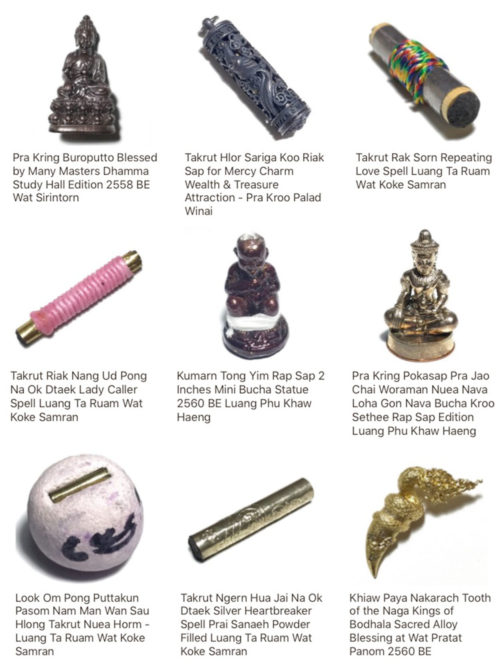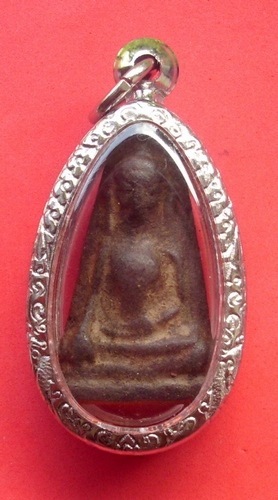A Look at the Human Belief and use of Amulets and Talismanic Charms throughout Global history
Amulets and talismanic charms have been an integral part of human culture for millennia, spanning across various civilizations, cultures, and time periods. These objects, often imbued with symbolic or protective significance, provide us with insights into the spiritual, social, and cultural aspects of our ancestors. This paper explores the history of amulets, ranging from the prehistoric era to more recent times, showcasing the diverse forms and functions they have taken on throughout human history.

1. Prehistoric Origins: Using objects as magical or protective symbols has been practiced since prehistoric times. Examples include the discovery of cave bear teeth with perforations that date back around 40,000 years in the Altai Mountains of Siberia. These ancient amulets illustrate how humans have always desired to tap into the power of material things for symbolic or spiritual ends.
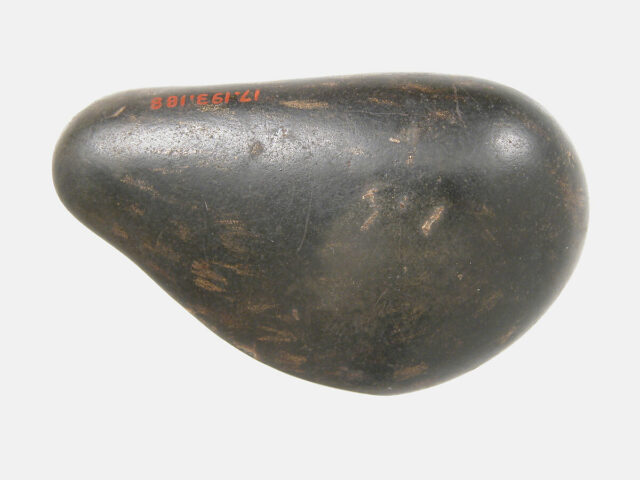
Neolithic Amulet
2. Paleolithic and Neolithic Expressions: During the Paleolithic period, and Neolithic period, amulets took various forms, including small figurines and perforated shells. The Venus of Hohle Fels, a carved figurine of a woman from mammoth ivory, and the Lion Man figurine with its hybrid form, are examples of the intricate and meaningful artifacts crafted during this time. These amulets likely held significance in rituals, fertility, and protection.
3. Symbolism in Ancient Civilizations: Amulets played a crucial role in ancient civilizations such as Egypt, Mesopotamia, Greece, and Rome. In ancient Egypt, amulets represented gods and concepts, like the Eye of Horus and the Ankh. Mesopotamian cylinder seals served both as amulets and tools for engraving. These amulets were often made from materials like clay, metal, and gemstones.
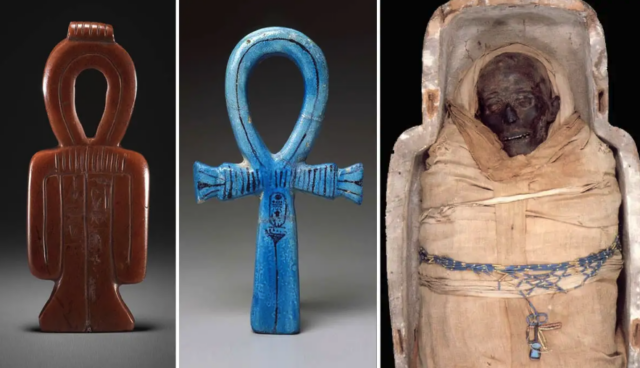
4. Medieval and Renaissance Charms: The Middle Ages and Renaissance saw the continuation of amulet use, often infused with Christian symbolism. Objects like Saint Christopher medals and crosses were worn as protective charms against various threats. These amulets reflect the evolving spiritual beliefs of the time.
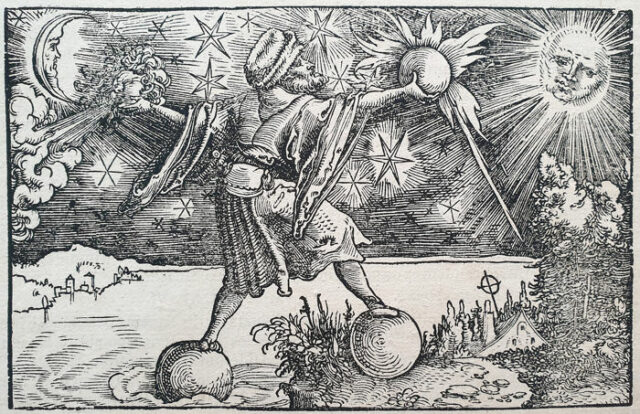
5. Global Cultural Diversity: Amulets were not limited to specific regions, but were prevalent across the globe. Native American tribes, African societies, and Asian civilizations all developed their own forms of amulets for various purposes, such as healing, protection, and spiritual connection.
6. Amulets in Modern Contexts: Amulets and talismanic charms continue to have a place in modern society. While traditional beliefs persist, new forms of amulets have emerged, including those associated with popular culture, spirituality, and personal beliefs. The concept of lucky charms and protective symbols remains deeply ingrained in human psychology.
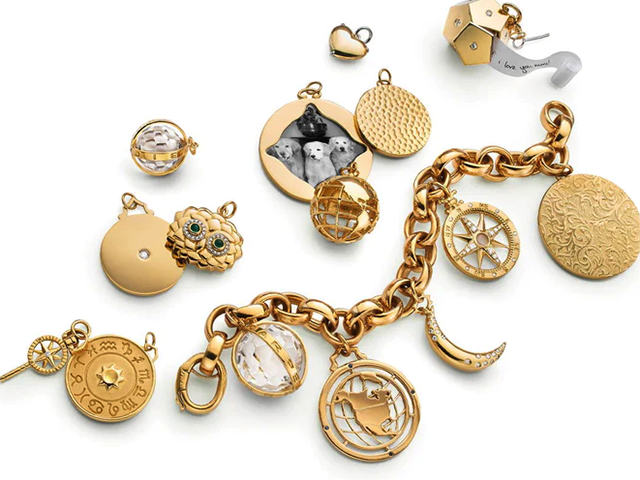
The history of the human use of amulets and talismanic charms is proof of how persistently humans have been drawn to things which we deem to have symbolic or protective meanings. These artifacts provide insight into the beliefs, values, and aspirations of humanity throughout the ages, ranging from the earliest perforated bear teeth to the sophisticated artifacts of ancient civilizations and the numerous types of amulets in modern times. The study of amulets offers us an improved awareness of the universal human yearning for connection, safety, and purpose in addition to a better appreciation of the common past we all share.
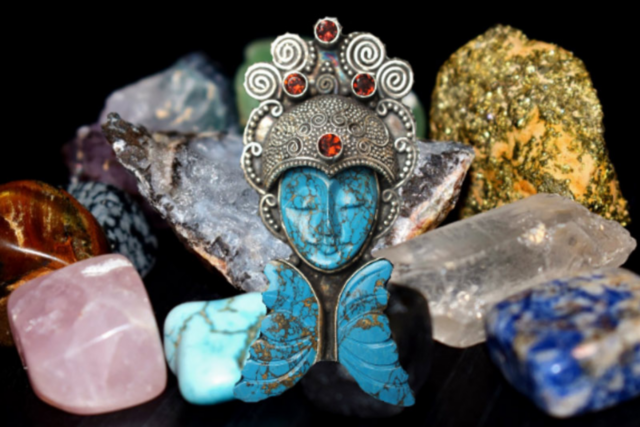
How far back does our use of amulets go? We have yet to discover the truth, but from archaeological evidence, here is a list of some of the oldest amulets found to date:
- Cave Bear Tooth Amulet (Altai Mountains, Siberia): A perforated cave bear tooth dating back around 40,000 years, found in Siberia. This is considered one of the earliest examples of an amulet. The Cave Bear Tooth Amulet is a small, carved tooth of a cave bear, dating to the Upper Paleolithic period (35,000–11,700 BCE). It was found in the Altai Mountains of Siberia, Russia. The tooth is only 2 cm (0.8 in) long and is carved with a simple design of concentric circles.
The purpose of the Cave Bear Tooth Amulet is unknown. It may have been a religious object, a talisman, or simply a piece of jewelry. It is one of the earliest known examples of figurative art from the Upper Paleolithic period and provides us with a glimpse into the symbolic world of our early ancestors.
Here are some additional details about the Cave Bear Tooth Amulet:
The tooth is made from the canine tooth of a cave bear, which was a large and powerful predator that lived in Europe and Asia during the Pleistocene epoch.
The tooth is carved with a simple design of concentric circles. This design is often found on other Upper Paleolithic artifacts, such as figurines and cave paintings.
The Cave Bear Tooth Amulet was found in a grave, suggesting that it may have been a funerary object.
The amulet is in good condition, which suggests that it was carefully curated and may have been considered to be a sacred object.
The Cave Bear Tooth Amulet is a fascinating and mysterious object. It provides us with a glimpse into the symbolic world of our early ancestors, but its true meaning remains unknown.Here are some possible interpretations of the meaning of the Cave Bear Tooth Amulet:
The concentric circles may represent the cycles of life and death.
The tooth may have been a symbol of power or strength.
The amulet may have been used to ward off evil spirits.
The amulet may have been a gift to the deceased in the afterlife.
Ultimately, the meaning of the Cave Bear Tooth Amulet is up to our interpretation. It is a powerful reminder of the rich symbolic world of our early ancestors. - Berekhat Ram Figurine (Golan Heights, Israel): A small, figurine-like object made from volcanic rock around 230,000 to 700,000 years ago. It’s debated whether it’s a natural formation or a man-made artifact with amuletic significance. The Berekhat Ram Figurine is a small, pebble-like object, dating to the Acheulean period (2.6–1.7 million years ago). It was found in Berekhat Ram, a volcanic crater on the Golan Heights, Israel. The figurine is only 3.5 cm (1.4 in) long and is made of a type of volcanic rock called scoria.
The Berekhat Ram Figurine is one of the oldest known examples of figurative art in the world. It is thought to have been made by early humans by incising the pebble with a flint tool to create a rounded shape with a depression in the center. The figurine has been interpreted as a female figure, with the depression representing the vulva.
The purpose of the Berekhat Ram Figurine is unknown. It may have been a religious object, a fertility symbol, or simply a child’s toy. It is one of the most important archaeological finds from the Acheulean period and provides us with a glimpse into the cognitive abilities and symbolic world of our early ancestors.
Here are some additional details about the Berekhat Ram Figurine:
The figurine is made of a type of volcanic rock called scoria, which is a lightweight and porous material. This makes it likely that the figurine was originally carried by its maker.
The figurine has been carefully incised with a flint tool. The incisions are deep and regular, suggesting that they were made with a great deal of skill.
The figurine has been interpreted as a female figure, with the depression in the center representing the vulva. However, some experts believe that the figurine may represent something else, such as a bird or a tree.
The Berekhat Ram Figurine was found in a layer of sediment that is dated to the Acheulean period. This means that it is at least 233,000 years old.
The Berekhat Ram Figurine is a fascinating and mysterious object. It provides us with a glimpse into the cognitive abilities and symbolic world of our early ancestors, but its true meaning remains unknown.Here are some possible interpretations of the meaning of the Berekhat Ram Figurine:
The figurine may have been a religious object, representing a female deity or ancestor.
The figurine may have been a fertility symbol, representing the power of women to create life.
The figurine may have been a child’s toy, used to represent a mother or other female figure.
The figurine may have been a piece of art, created for its own sake. - Venus of Hohle Fels (Swabian Jura, Germany): A small figurine of a woman carved from mammoth ivory, estimated to be around 35,000 years old. It’s thought to have had symbolic or amuletic meaning. The Venus of Hohle Fels is a small, ivory figurine of a woman, dating to the Aurignacian period (40,000–35,000 BCE). It was found in Hohle Fels, a cave near Schelklingen, Germany. The figurine is only 6 cm (2.4 in) tall and is made of mammoth ivory.
Venus of Hohle Fels (Swabian Jura, Germany)Opens in a new window
www.world-archaeology.com
Venus of Hohle Fels (Swabian Jura, Germany)The Venus of Hohle Fels is one of the oldest known examples of figurative art in the world. It is also the earliest undisputed example of a depiction of a human being. The figurine is highly stylized, with exaggerated features such as large breasts, buttocks, and vulva. The face is not depicted in detail.
The purpose of the Venus of Hohle Fels is unknown. It may have been a religious object, a fertility symbol, or simply a piece of jewelry. It is one of the most important archaeological finds from the Aurignacian period and provides us with a glimpse into the lives and beliefs of our early ancestors.
Here are some additional details about the Venus of Hohle Fels:
The figurine is made of mammoth ivory, which was a rare and valuable material at the time. This suggests that the figurine was made by a skilled craftsman and may have been considered to be a precious object.
The figurine is highly stylized, with exaggerated features such as large breasts, buttocks, and vulva. This suggests that the figurine was not intended to be a realistic representation of a woman, but rather a symbol of female fertility or power.
The Venus of Hohle Fels was found in a cave, suggesting that it may have been used in a ritual or religious context.
The figurine is in good condition, which suggests that it was carefully curated and may have been considered to be a sacred object.
The Venus of Hohle Fels is a fascinating and mysterious object. It provides us with a glimpse into the lives and beliefs of our early ancestors, but its true meaning remains unknown.Here are some possible interpretations of the meaning of the Venus of Hohle Fels:
The figurine may have been a religious object, representing a female deity or ancestor.
The figurine may have been a fertility symbol, representing the power of women to create life.
The figurine may have been a good luck charm, used to bring fertility or prosperity.
The figurine may have been a piece of art, created for its own sake. - Lion Man Figurine (Hohlenstein-Stadel, Germany): A figurine with the body of a human and the head of a lion, carved from mammoth ivory around 40,000 years ago. It’s believed to hold spiritual or ritual significance. The Lion Man Figurine is a small, ivory figurine of a hybrid creature, dating to the Aurignacian period (40,000–35,000 BCE). It was found in Hohlenstein-Stadel, a cave near Ulm, Germany. The figurine is only 31.1 cm (12.2 in) tall and is made of mammoth ivory.
Lion Man Figurine (Hohlenstein-Stadel, Germany)Opens in a new window
en.wikipedia.org
Lion Man Figurine (Hohlenstein-Stadel, Germany)The Lion Man Figurine is one of the oldest and most enigmatic examples of figurative art in the world. It is a composite creature, with the head and mane of a lion and the body of a human. The figurine is highly stylized, with exaggerated features such as the lion’s mane and the human’s legs.
The purpose of the Lion Man Figurine is unknown. It may have been a religious object, a totemic animal, or simply a piece of art. It is one of the most important archaeological finds from the Aurignacian period and provides us with a glimpse into the symbolic world of our early ancestors.
Here are some additional details about the Lion Man Figurine:
The figurine is made of mammoth ivory, which was a rare and valuable material at the time. This suggests that the figurine was made by a skilled craftsman and may have been considered to be a precious object.
The figurine is highly stylized, with exaggerated features such as the lion’s mane and the human’s legs. This suggests that the figurine was not intended to be a realistic representation of a lion or a human, but rather a symbol of power, strength, or divinity.
The Lion Man Figurine was found in a cave, suggesting that it may have been used in a ritual or religious context.
The figurine is in good condition, which suggests that it was carefully curated and may have been considered to be a sacred object.
The Lion Man Figurine is a fascinating and mysterious object. It provides us with a glimpse into the symbolic world of our early ancestors, but its true meaning remains unknown.Here are some possible interpretations of the meaning of the Lion Man Figurine:
The figurine may have been a religious object, representing a lion god or ancestor.
The figurine may have been a totemic animal, representing the power and strength of the lion.
The figurine may have been a piece of art, created to represent the beauty and power of nature.
The figurine may have been a talisman, used to bring protection or good luck. - Perforated Shells (Skhul Cave, Israel): Perforated Nassarius shells found in Skhul Cave, dating back around 100,000 years. These shells are thought to have been used as beads or amulets. The Perforated Shells (Skhul Cave, Israel) are a series of seashells that have been pierced with holes, dating to the Middle Paleolithic period (125,000–40,000 BCE). They were found in Skhul Cave, a site in Israel that is home to a number of important archaeological finds, including the Skhul and Qafzeh hominins, which are some of the earliest known anatomically modern humans.
The Perforated Shells are made of a variety of seashells, including cowries, whelks, and spondylus shells. The holes in the shells are typically small and evenly spaced, suggesting that they were deliberately pierced.
The purpose of the Perforated Shells is unknown. They may have been used as jewelry, musical instruments, or tools. They may also have had a symbolic or ritual significance.
Here are some additional details about the Perforated Shells:
The Perforated Shells were found in a layer of sediment that is dated to the Middle Paleolithic period. This means that they are at least 125,000 years old.
The Perforated Shells were found in association with other artifacts, such as stone tools and animal bones. This suggests that they were used by the people who lived in Skhul Cave.
The Perforated Shells are some of the earliest known examples of personal adornment. This suggests that early humans had a sense of aesthetics and a desire to decorate themselves.
The Perforated Shells are a fascinating and mysterious object. They provide us with a glimpse into the lives and beliefs of our early ancestors, but their true meaning remains unknown.Here are some possible interpretations of the meaning of the Perforated Shells:
The Perforated Shells may have been used as jewelry, worn as a way to express personal style or social status.
The Perforated Shells may have been used as musical instruments, played to create sound or rhythm.
The Perforated Shells may have been used as tools, used to scrape or cut.
The Perforated Shells may have had a symbolic or ritual significance, used in religious ceremonies or to represent spiritual beliefs. - Mammoth Tusk Amulet (Gazel, Crimea): A mammoth tusk fragment carved into a recognizable shape, found in a cave in the Crimea and estimated to be around 20,000 to 25,000 years old. The Mammoth Tusk Amulet (Gazel, Crimea) is a small, ivory amulet, dating to the Gravettian period (29,000–25,000 BCE). It was found in Gazel Cave, a site in Crimea, Ukraine, that is home to a number of important archaeological finds, including the Mezin Mammoth, which is the largest mammoth ever found in Europe.
The Mammoth Tusk Amulet is only 2.5 cm (1 in) long and is made of mammoth ivory. It is shaped like a phallus, with a rounded head and a tapering shaft. The amulet is perforated at the top, suggesting that it was worn as jewelry.
The purpose of the Mammoth Tusk Amulet is unknown. It may have been a religious object, a fertility symbol, or simply a piece of jewelry. It is one of the most important archaeological finds from the Gravettian period in Crimea and provides us with a glimpse into the lives and beliefs of our early ancestors.
Here are some additional details about the Mammoth Tusk Amulet:
The Mammoth Tusk Amulet was found in a layer of sediment that is dated to the Gravettian period. This means that it is at least 29,000 years old.
The Mammoth Tusk Amulet was found in association with other artifacts, such as stone tools and animal bones. This suggests that it was used by the people who lived in Gazel Cave.
The Mammoth Tusk Amulet is one of the earliest known examples of phallic jewelry. This suggests that early humans were fascinated by the phallus and may have seen it as a symbol of fertility or power.
The Mammoth Tusk Amulet is a fascinating and mysterious object. It provides us with a glimpse into the lives and beliefs of our early ancestors, but its true meaning remains unknown.Here are some possible interpretations of the meaning of the Mammoth Tusk Amulet:
The Mammoth Tusk Amulet may have been a religious object, representing a fertility god or ancestor.
The Mammoth Tusk Amulet may have been a good luck charm, used to bring fertility or prosperity.
The Mammoth Tusk Amulet may have been a piece of jewelry, worn as a way to express personal style or social status.
The Mammoth Tusk Amulet may have had a symbolic or ritual significance, used in religious ceremonies or to represent spiritual beliefs. - Gravettian Pendant (Moravia, Czech Republic): A perforated fox tooth pendant from the Gravettian period, roughly 30,000 years ago.
- Mezin Pendant (Mezin, Ukraine): A carved mammoth ivory pendant with intricate geometric designs, created around 15,000 to 20,000 years ago. The Mezin Pendant is a small, ivory pendant, dating to the Gravettian period (29,000–25,000 BCE). It was found in Mezin, a site in Ukraine that is home to a number of important archaeological finds, including the Mezin Mammoth, which is the largest mammoth ever found in Europe.
The Mezin Pendant is only 4 cm (1.6 in) long and is made of mammoth ivory. It is shaped like a bird, with a long beak and a curved tail. The pendant is perforated at the top, suggesting that it was worn as jewelry.
The purpose of the Mezin Pendant is unknown. It may have been a religious object, a fertility symbol, or simply a piece of jewelry. It is one of the most important archaeological finds from the Gravettian period in Ukraine and provides us with a glimpse into the lives and beliefs of our early ancestors.
Here are some additional details about the Mezin Pendant:
The Mezin Pendant was found in a layer of sediment that is dated to the Gravettian period. This means that it is at least 29,000 years old.
The Mezin Pendant was found in association with other artifacts, such as stone tools and animal bones. This suggests that it was used by the people who lived in Mezin.
The Mezin Pendant is one of the earliest known examples of bird-shaped jewelry. This suggests that early humans were fascinated by birds and may have seen them as symbols of power or freedom.
The Mezin Pendant is a fascinating and mysterious object. It provides us with a glimpse into the lives and beliefs of our early ancestors, but its true meaning remains unknown.Here are some possible interpretations of the meaning of the Mezin Pendant:
The Mezin Pendant may have been a religious object, representing a bird god or ancestor.
The Mezin Pendant may have been a fertility symbol, representing the power of birds to fly and reproduce.
The Mezin Pendant may have been a piece of jewelry, worn as a way to express personal style or social status.
The Mezin Pendant may have had a symbolic or ritual significance, used in religious ceremonies or to represent spiritual beliefs. - Pendant from Dolní Věstonice (Czech Republic): A fired clay pendant adorned with patterns and dating back around 26,000 years.
The Pendant from Dolní Věstonice is a small, ceramic figurine of a woman, dating to the Gravettian period (29,000–25,000 BCE). It was found in Dolní Věstonice, a village in South East Bohemia, Czech Republic. The figurine is only 25 mm (1 in) tall and is made of fired clay. It is one of the oldest known ceramic figurines in the world.The figurine is steatopygous, meaning that it has large buttocks. This is a characteristic feature of many Venus figurines from the Gravettian period. The figurine also has large breasts and a small head. Its face is not depicted in detail.
The purpose of the Pendant from Dolní Věstonice is unknown. It may have been a religious object, a fertility symbol, or simply a piece of jewelry. It is one of the most important archaeological finds from the Gravettian period and provides us with a glimpse into the lives and beliefs of our early ancestors.
Here are some additional details about the Pendant from Dolní Věstonice:
It is made of fired clay, which is a relatively rare material for figurines of this time period. Most Venus figurines are made of stone or ivory.
The figurine is hollow, which suggests that it may have been used as a container for some kind of substance, such as perfume or oil.
The figurine was found in a grave, suggesting that it may have been a funerary object.
The figurine is in excellent condition, which is unusual for objects of this age. This suggests that it was carefully curated and may have been considered to be a sacred object.
The Pendant from Dolní Věstonice is a fascinating and mysterious object. It provides us with a glimpse into the lives and beliefs of our early ancestors, but its true meaning remains unknown. - Black Venus Figurine (France): A figurine made from jet black lignite, crafted around 23,000 years ago. The Black Venus Figurine is a small, ivory figurine, dating to the Gravettian period (29,000–25,000 BCE). It was found in Dolni Věstonice, a site in Moravia, Czech Republic, that is home to a number of important archaeological finds, including the Venus of Dolní Věstonice, which is one of the most famous examples of a Venus figurine.
The Black Venus Figurine is only 111 millimeters (4.4 in) tall and is made of a mixture of charred powdered bone and clay. It is one of the oldest known ceramic figurines in the world.
The figurine is steatopygous, meaning that it has large buttocks. This is a characteristic feature of many Venus figurines from the Gravettian period. The figurine also has large breasts and a small head. Its face is not depicted in detail.
The purpose of the Black Venus Figurine is unknown. It may have been a religious object, a fertility symbol, or simply a piece of jewelry. It is one of the most important archaeological finds from the Gravettian period in Moravia and provides us with a glimpse into the lives and beliefs of our early ancestors.
Here are some additional details about the Black Venus Figurine:
The Black Venus Figurine is made of a mixture of charred powdered bone and clay. This material produced a self-glazing, black finish in the kiln, causing many of the other ceramic pieces found at the same site to have an unusual, shiny, black appearance.
The Black Venus Figurine was found in a layer of sediment that is dated to the Gravettian period. This means that it is at least 29,000 years old.
The Black Venus Figurine was found in association with other artifacts, such as stone tools and animal bones. This suggests that it was used by the people who lived in Dolni Věstonice.
The Black Venus Figurine is one of the earliest known examples of ceramic figurines in the world. This suggests that early humans had a sophisticated understanding of ceramics and were able to create complex objects.
The Black Venus Figurine is a fascinating and mysterious object. It provides us with a glimpse into the lives and beliefs of our early ancestors, but its true meaning remains unknown.Here are some possible interpretations of the meaning of the Black Venus Figurine:
The Black Venus Figurine may have been a religious object, representing a female deity or ancestor.
The Black Venus Figurine may have been a fertility symbol, representing the power of women to create life.
The Black Venus Figurine may have been a piece of jewelry, worn as a way to express personal style or social status.
The Black Venus Figurine may have had a symbolic or ritual significance, used in religious ceremonies or to represent spiritual beliefs.

